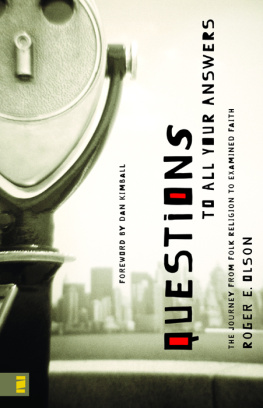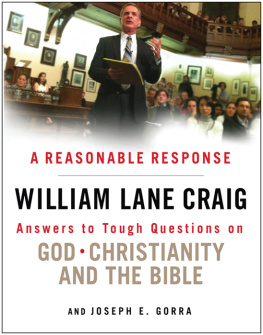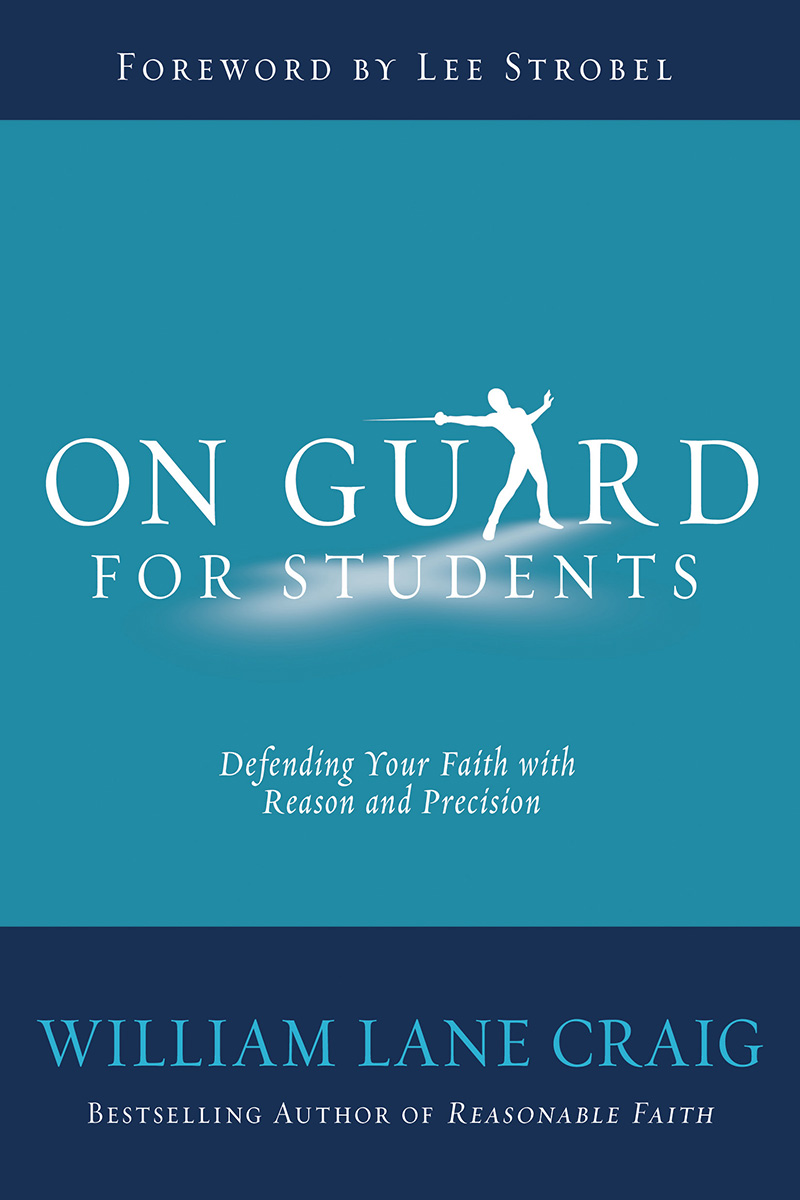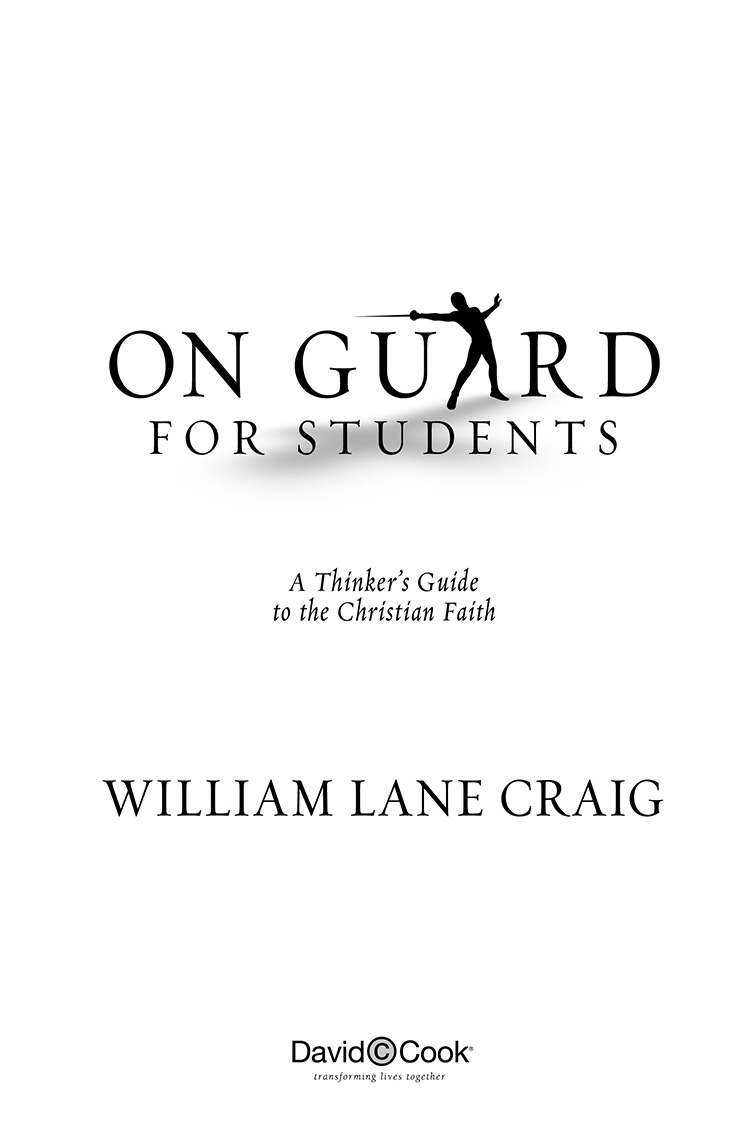ON GUARD FOR STUDENTS
Published by David C Cook
4050 Lee Vance View
Colorado Springs, CO 80918 U.S.A.
David C Cook Distribution Canada
55 Woodslee Avenue, Paris, Ontario, Canada N3L 3E5
David C Cook U.K., Kingsway Communications
Eastbourne, East Sussex BN23 6NT, England
The graphic circle C logo is a registered trademark of David C Cook.
All rights reserved. No part of this ebook may be reproduced, scanned, resold, or distributed by or through any print or electronic medium without written permission from the publisher. This ebook is licensed solely for the personal and noncommercial use of the original authorized purchaser, subject to the terms of use under which it was purchased. Please do not participate in or encourage piracy of copyrighted materials in violation of the authors rights.
The website addresses recommended throughout this book are offered as a resource to you. These websites are not intended in any way to be or imply an endorsement on the part of David C Cook, nor do we vouch for their content.
Unless otherwise noted, all Scripture quotations are taken from The Holy Bible: Revised Standard Version. Copyright 1946, 1973 by the Division of Christian Education of the National Council of the Churches of Christ in the United States of America. All rights reserved. Used by permission. Scripture quotations marked ESV are taken from The Holy Bible, English Standard Version (ESV), copyright 2001 by Crossway, a publishing ministry of Good News Publishers. Used by permission. All rights reserved; NASB are taken from the New American Standard Bible, Copyright 1960, 1995 by The Lockman Foundation. Used by permission. (www.Lockman.org); NIV are taken from the Holy Bible, New International Version, NIV. Copyright 1973, 2011 by Biblica, Inc. Used by permission of Zondervan. All rights reserved worldwide. www.zondervan.com; NLT are taken from the Holy Bible , New Living Translation, copyright 1996, 2007 by Tyndale House Foundation. Used by permission of Tyndale House Publishers, Inc., Carol Stream, Illinois 60188. All rights reserved; NRSV are taken from the New Revised Standard Version Bible, copyright 1989, Division of Christian Education of the National Council of the Churches of Christ in the United States of America. Used by permission. All rights reserved; and TEV are taken from the Good News Bible: Todays English Version 1966 American Bible Society. The author has added italics to Scripture quotations for emphasis.
LCCN 2014959543
ISBN 978-0-7814-1299-5
eISBN 978-0-7814-1329-9
2015 William Lane Craig
Material adapted from On Guard , first edition, by William Lane Craig 2010, published by David C Cook.
The Team: Andrew Stoddard, Andrew Meisenheimer, Jack Campbell, Nick Lee, Karen Athen
Cover Design: Amy Konyndyk
Cover Photo: iStock
Interior Portraits: Dan Schultz
Interior Sketches: Luke Flowers
First Edition 2015
Photo by Rick Harris
WILLIAM LANE CRAIG is a research professor of philosophy at Biola University. He is an internationally acclaimed author and speaker. Many of his published articles, as well as videos of many of his lectures and debates, may be found at www.ReasonableFaith.org.
Visit DCCeBooks.com for more great reads.

CONTENTS
FOREWORD
This book is intended to be a sort of trail guide for students seeking to explore the truth of Christianity. So it is a book to be studied , not just read. Youll find numerous arguments in support of various positions throughout the text. In discussing each argument, Ill present a reason (or several reasons) to think that each step in the argument is true. Then Ill discuss the strongest objections to each step before coming to a conclusion.
So, for example, suppose we have the following argument.
1. All men are mortal.
2. Socrates is a man.
3. Therefore, Socrates is mortal.
This is what we call a logically valid argument. That is to say, if steps 1 and 2 are true, then the conclusion 3 is also true.
There are only about nine basic rules of logic that govern such arguments. So long as you obey the rules of logic, they guarantee that if the steps are true, then the conclusion is true as well. We then say that the conclusion follows logically from steps 1 and 2.
So the question then becomes: Are steps 1 and 2 in the above argument true ? In support of step 1, we might present scientific and medical evidence for the fact that all men are mortal. In support of step 2, we might turn to historical evidence to prove that Socrates was a man. Along the way, wed want to consider any objections to 1 or 2 and seek to answer them. For example, someone might deny step 2 because he believes that Socrates is just a mythical figure and not a real man. Wed have to show why the evidence suggests that this belief is mistaken.
PREMISE
The steps of an argument that lead to the conclusion are called the premises of the argument.
The steps in the argument are called premises . If you obey the rules of logic, the conclusion will follow necessarily from the premises.
Now a person can always avoid any arguments conclusion simply by denying one of the arguments premises. Someone cant be forced to accept the conclusion if hes willing to pay the price of rejecting one of the premises. But when theres good evidence for the truth of the premises, the price of rejecting one of them just to avoid the conclusion may become uncomfortably high.
For example, the person who denies premise 2 of the above argument is embracing a historical skepticism that the vast majority of professional historians would find quite unjustified. So he can reject premise 2 if he wants to, but he pays the price of making himself look like a kook. Such a person can hardly condemn as irrational someone who does accept the truth of premise 2.
Now whether the price of denying an arguments premises is too high will vary from person to person. Its up to you to assess the cogency of the arguments I present. I wont feel bad if you disagree with me on various points. I want you to think for yourself. At least you will see what it will cost intellectually to resist the conclusions. If you find that price too high, then you may come to accept the conclusions of the arguments.
In presenting the arguments and evidence in this book, Ive tried to be simple without being simplistic . Sometimes the material may be new and difficult for you. Id encourage you to consider it in small bites, which are easier to digest. You might find it helpful to be part of a small group in which you can discuss the arguments.
At the end of most chapters youll find an argument map or outline of the case presented in that chapter. Let me explain how to use the argument map. The map has a swim lane format that exhibits my argument in the left-hand lane labeled Pro. The right-hand lane labeled Con exhibits the objections that might be raised by those against the argument. The arrows moving back and forth across the lanes trace the various pro and con responses that might be given. These maps will help you to see the big picture.
Next page

